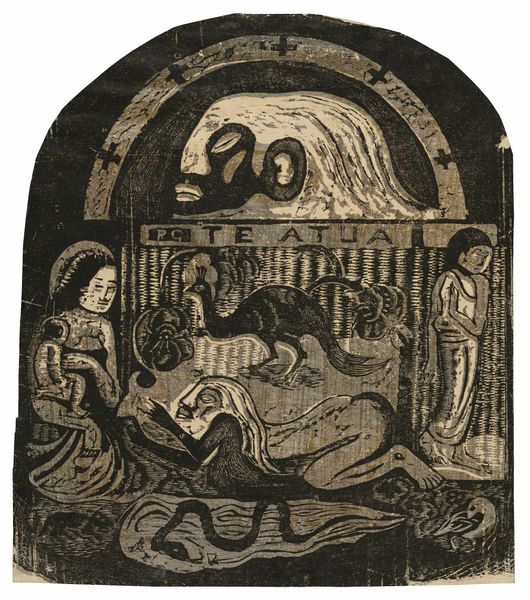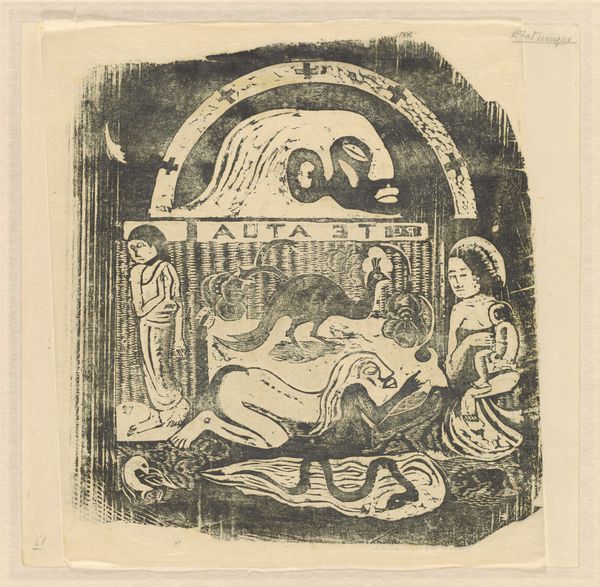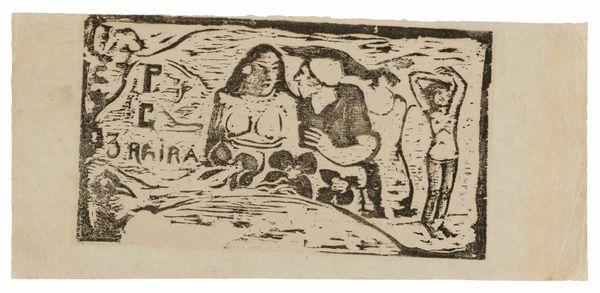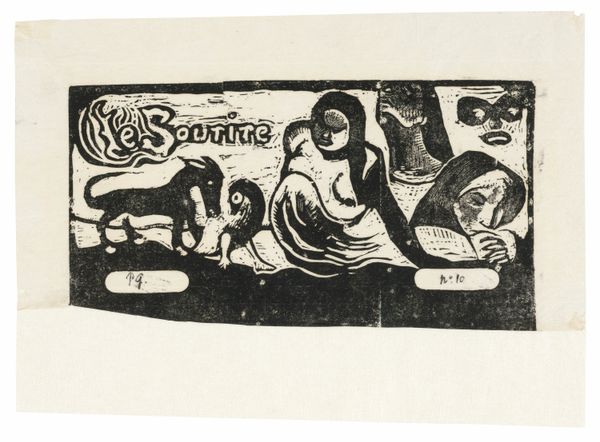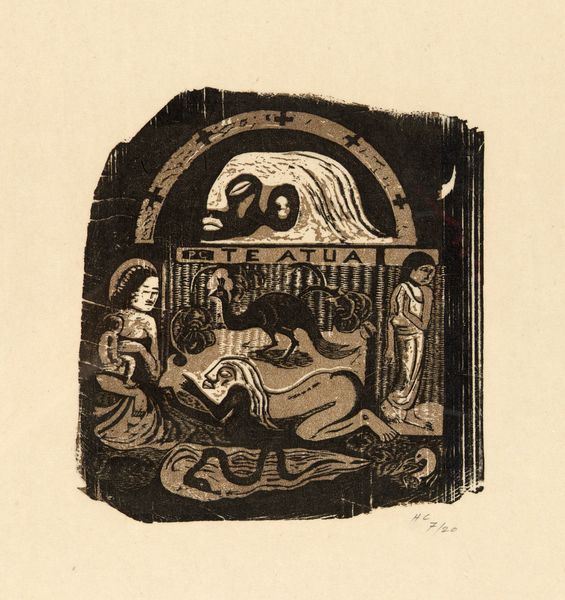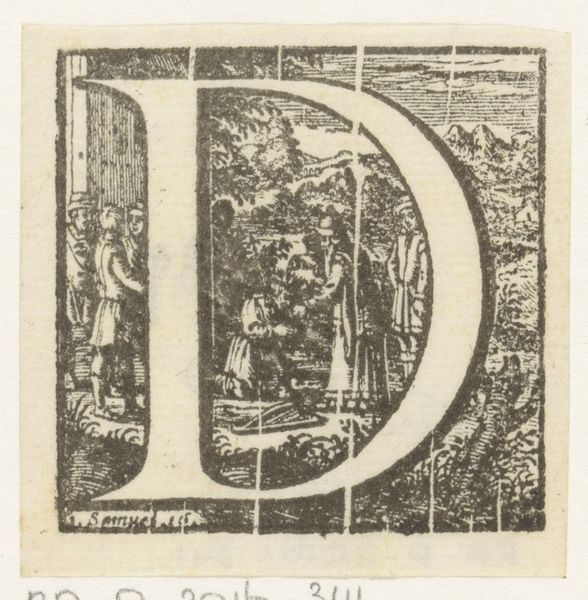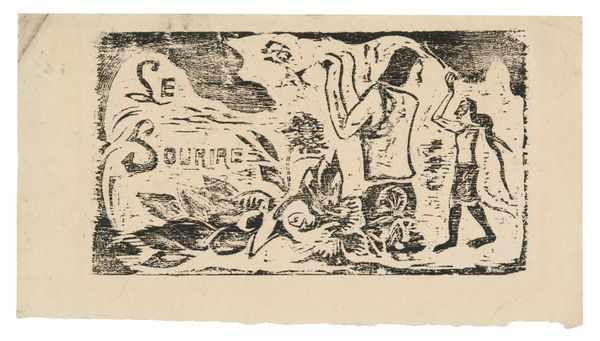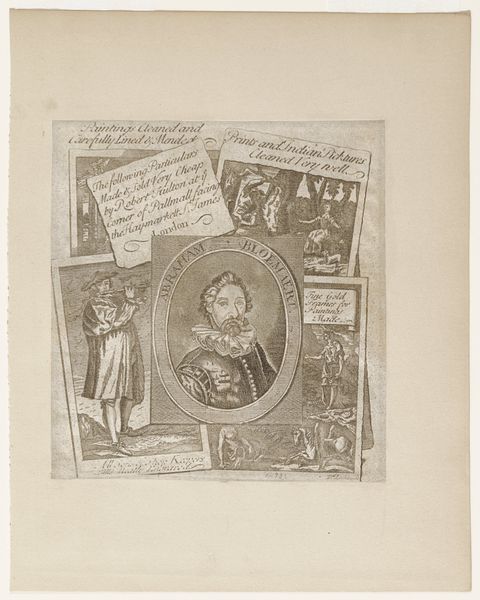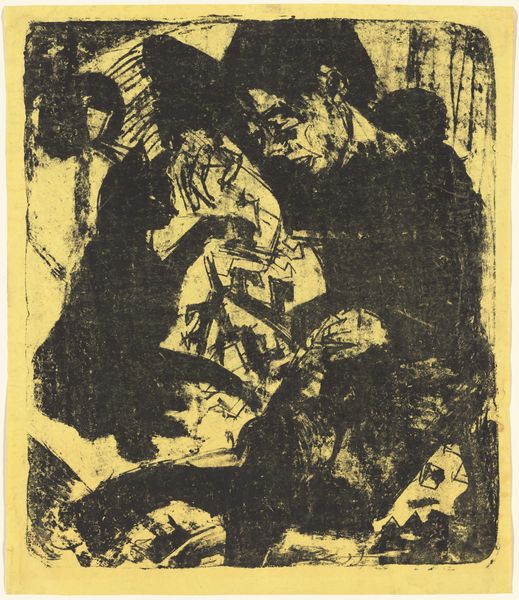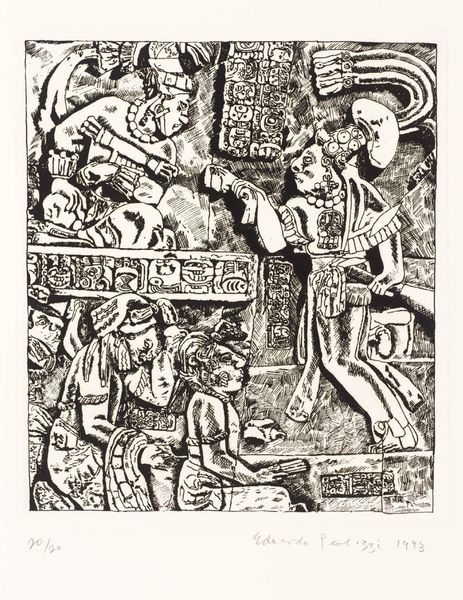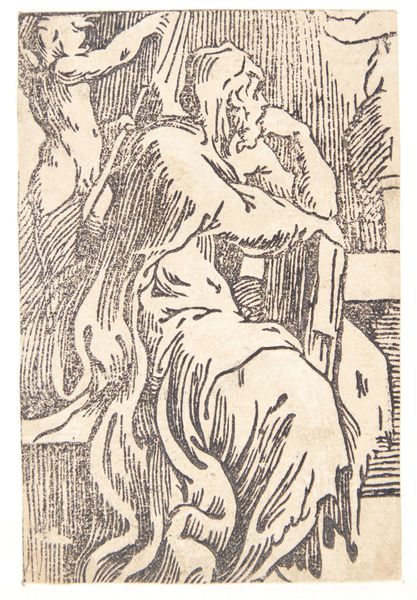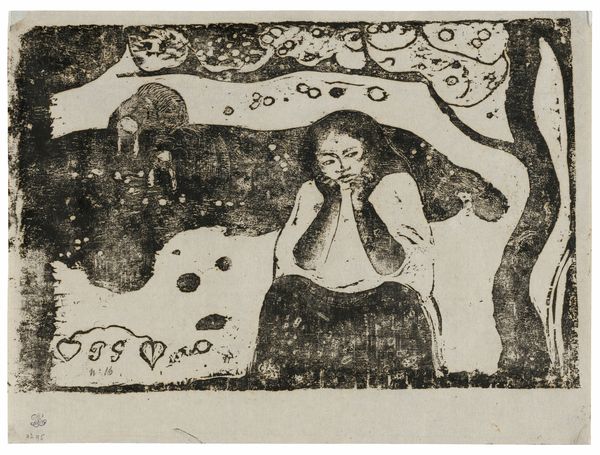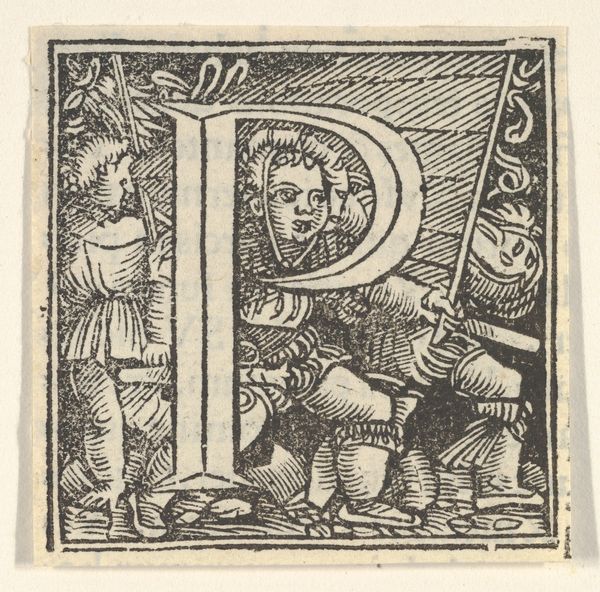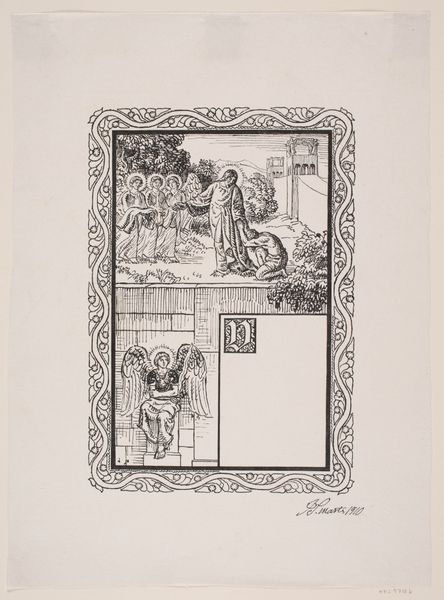
Te atua (The God), from the Suite of Late Wood-Block Prints 1898 - 1899
0:00
0:00
print, paper, woodblock-print, woodcut
#
narrative-art
# print
#
figuration
#
paper
#
woodblock-print
#
woodcut
#
symbolism
#
post-impressionism
#
erotic-art
Dimensions: 242 × 226 mm (image); 255 × 226 mm (sheet)
Copyright: Public Domain
Paul Gauguin created this wood-block print, titled "Te Atua," which translates to "The God," as part of his late suite of prints. The image depicts a variety of symbols central to Polynesian spirituality. We see figures reminiscent of deities or ancestral spirits, animals, and natural elements. Consider the arch above, adorned with crosses, and the figure beneath, evoking a sense of sacred space. We see echoes of Christian iconography, yet interwoven with indigenous Tahitian motifs. This juxtaposition is fascinating. It invites us to contemplate the syncretism—the blending of different beliefs—that occurs when cultures collide. Think of the snake. It appears here, slithering across the lower part of the image, carrying primal symbolism related to temptation and knowledge. The Christian tradition casts the snake as a symbol of deceit, whereas in other cultures, it represents healing and transformation. These recurring motifs, charged with emotion and cultural significance, speak to a collective memory that transcends individual experience. Like palimpsests, these images bear the marks of past interpretations, layered with new meanings in an ongoing, cyclical progression.
Comments
No comments
Be the first to comment and join the conversation on the ultimate creative platform.

